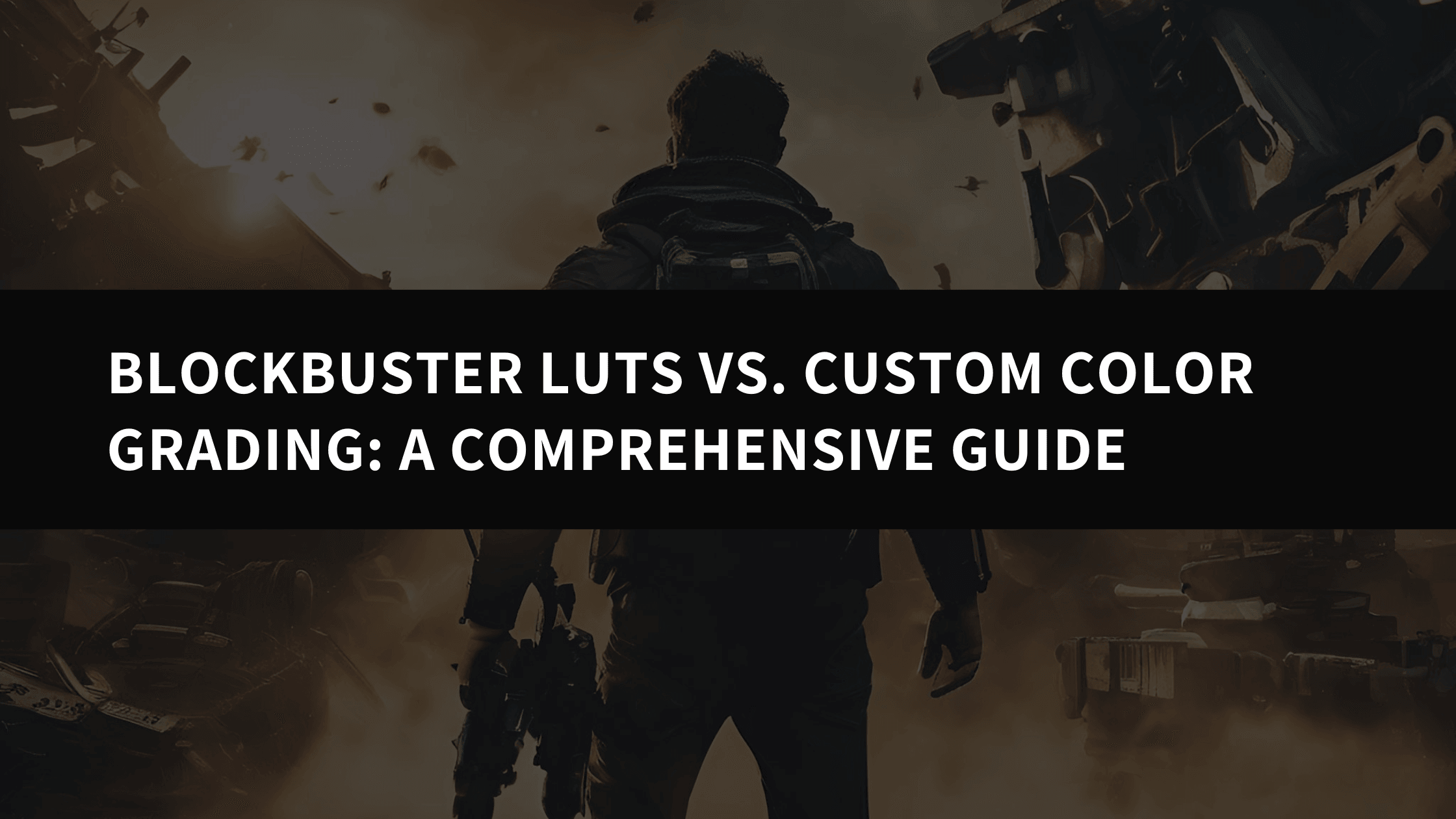LUTs vs. Manual Color Grading: Which Method Reigns Supreme in 2025?
In the ever-evolving landscape of video production, the quest for visually stunning and emotionally resonant content drives innovation in post-production workflows. Two prominent techniques, LUTs (Lookup Tables) and manual color grading, have emerged as cornerstones of modern video enhancement, each offering unique advantages and drawbacks. This in-depth comparison will navigate the complexities of both approaches, empowering you to make informed decisions based on your project's demands, your skillset, and your desired aesthetic outcome.
A Comprehensive Look at LUTs: Speed, Efficiency, and Preset Power
LUTs, or Lookup Tables, are pre-designed color profiles that function as efficient shortcuts, instantly transforming your footage's color palette. Imagine them as sophisticated, highly customizable filters, offering far more nuanced control than traditional filters. Applying a LUT is typically a one-click process, drastically accelerating your workflow. This efficiency is invaluable for large-scale projects, high-volume editing, or any situation where time is a critical factor. Moreover, LUTs ensure remarkable consistency across multiple clips, preserving a cohesive visual style throughout your video.
The market abounds with LUT packs tailored to diverse creative needs. For those aiming for that coveted Hollywood blockbuster look, the  120+ Cinematic Blockbuster Movie Look LUTs Pack offers a vast array of cinematic styles. Wedding videographers can achieve precise and elegant color palettes with the
120+ Cinematic Blockbuster Movie Look LUTs Pack offers a vast array of cinematic styles. Wedding videographers can achieve precise and elegant color palettes with the  150+ Wedding LUTs for Final Cut, Premiere Pro & Resolve. Music video creators can infuse their projects with vibrant energy using the
150+ Wedding LUTs for Final Cut, Premiere Pro & Resolve. Music video creators can infuse their projects with vibrant energy using the  300+ Music Video Color Grading LUTs Pack. For breathtaking aerial shots, the
300+ Music Video Color Grading LUTs Pack. For breathtaking aerial shots, the  70+ Cinematic Drone Video LUTs Pack is an excellent choice. And for an extensive collection to cover any project, the
70+ Cinematic Drone Video LUTs Pack is an excellent choice. And for an extensive collection to cover any project, the  700+ Cinematic Video LUTs For Your Next Project is a comprehensive resource.
700+ Cinematic Video LUTs For Your Next Project is a comprehensive resource.
The Art of Manual Color Grading: Precision, Control, and Artistic Expression
Manual color grading stands as the epitome of creative control. Unlike LUTs, it doesn't rely on pre-defined looks. Instead, it involves meticulously adjusting individual color channels, curves, and various other parameters to craft the precise atmosphere and mood you envision. This hands-on, nuanced approach empowers you to achieve subtle gradations and fine-tune specific details, injecting your unique artistic vision into every frame. It shines particularly in projects requiring a highly distinctive visual style or when the subtleties of a scene demand highly specific color adjustments.
However, mastering manual color grading requires a significant investment of time and effort. It demands a deep understanding of color theory, color science, and the intricacies of your preferred editing software. While the learning curve is steeper, the payoff is substantial, enabling an unparalleled level of expressiveness and control that surpasses even the most sophisticated LUTs. The ability to fine-tune color temperature, contrast, saturation, and individual color channels opens up a world of unique possibilities for visual storytelling.
A Detailed Side-by-Side Comparison: Choosing the Right Tool for the Job
The choice between LUTs and manual color grading depends on several pivotal factors:
Workflow Speed and Efficiency:
- LUTs: Dramatically faster, ideal for extensive projects, high-volume editing, or situations demanding rapid turnaround times. The one-click application significantly streamlines the workflow, freeing up valuable time for other aspects of post-production.
- Manual Grading: More time-intensive, requiring significant expertise and meticulous attention to detail. Better suited for smaller projects or when a highly individualized, custom-tailored aesthetic is paramount.
Creative Control and Artistic Vision:
- LUTs: Offers a degree of creative control, providing a starting point for color correction. However, they inherently lack the nuance and flexibility of manual grading, particularly when precise and subtle adjustments are crucial.
- Manual Grading: Enables comprehensive creative control, allowing for the fine-tuning of every aspect of color and the precise implementation of artistic intent. This approach results in visually stunning and unique outcomes.
Color Consistency and Overall Cohesion:
- LUTs: Offers excellent color consistency, ensuring uniformity across all clips and scenes. This is essential for maintaining visual cohesion and preventing jarring transitions or shifts in color tone.
- Manual Grading: Achieving consistency across various shots and scenes requires advanced skills and expertise. Inconsistent application can lead to noticeable disparities in color, detracting from the overall visual flow of the project.
Ease of Learning and Skill Acquisition:
- LUTs: Relatively easy to learn. Even beginners can achieve professional-looking results with minimal training, thanks to the straightforward application process and readily available tutorials and resources.
- Manual Grading: Presents a steeper learning curve. It requires dedicated practice, in-depth understanding of color theory, and a strong grasp of video editing techniques to achieve consistent, high-quality results.
Cost Considerations and Return on Investment:
- LUTs: The cost varies, depending on the quality and size of the LUT pack. High-quality packs might be expensive, but the significant time savings and efficiency gains can make them a worthwhile investment, especially for professionals working on multiple projects.
- Manual Grading: The primary cost is time. The more intricate and detailed the project, the more time and effort are required. However, this investment can lead to superior visual results, potentially justifying the additional time commitment.
The Ideal Approach: A Synergistic Fusion of LUTs and Manual Grading
The "best" method isn't a binary choice—it depends entirely on your project's requirements, your technical proficiency, and your artistic vision. For projects emphasizing speed, efficiency, and visual consistency, LUTs are exceptionally valuable. They provide a rapid pathway to professional-grade results without extensive manual adjustment. For projects where maximum creative control, precise color adjustments, and a distinctive artistic style are paramount, manual color grading takes center stage.
Many experienced professionals leverage a hybrid approach, combining the strengths of both techniques. They may begin with a LUT to establish a basic color palette, then refine and personalize the look with meticulous manual adjustments. This synergistic approach provides the best of both worlds, balancing speed and efficiency with fine-grained control and artistic expressiveness. The result is a streamlined workflow coupled with a visually stunning and uniquely customized final product.




Leave a comment
This site is protected by hCaptcha and the hCaptcha Privacy Policy and Terms of Service apply.